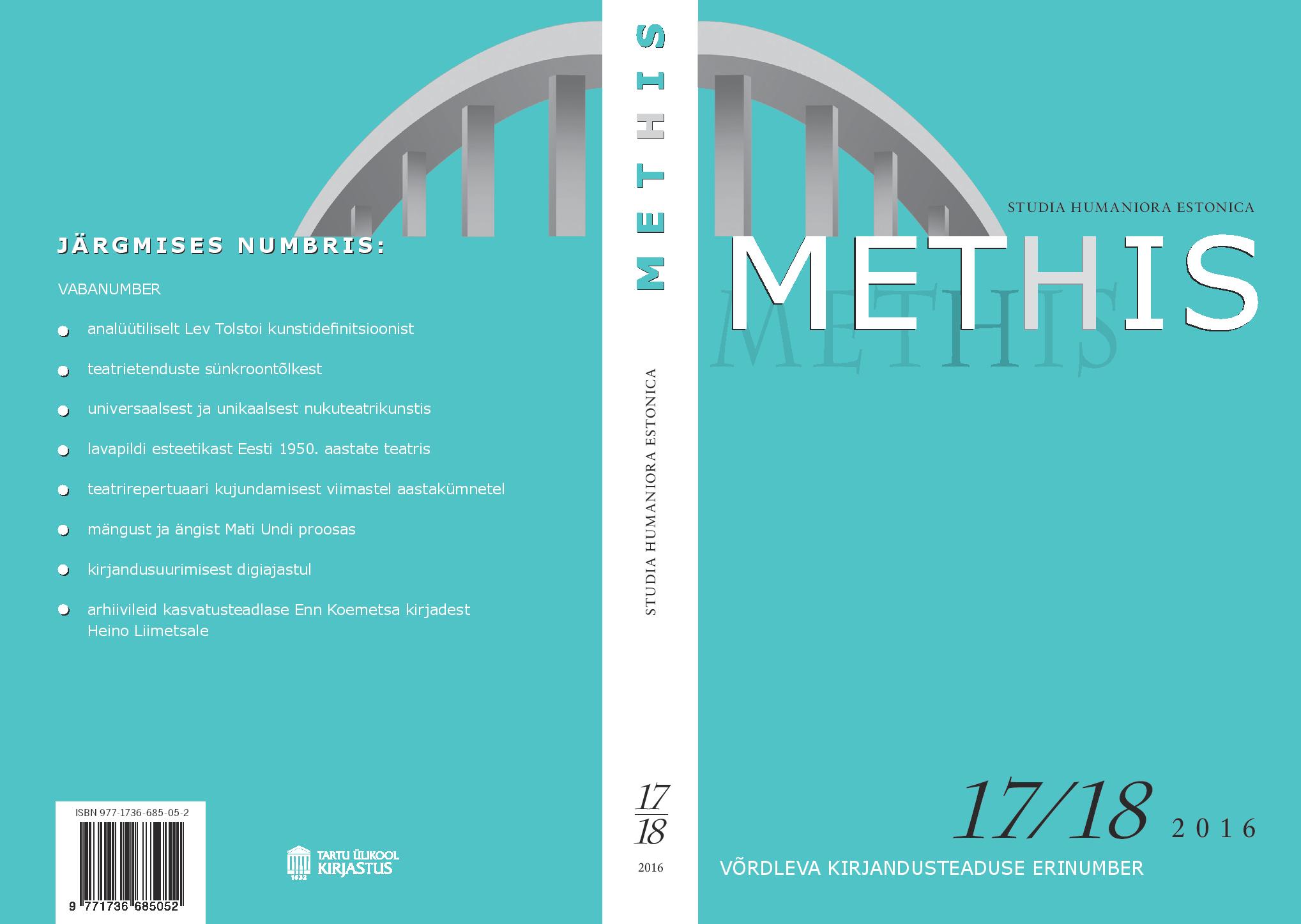Adressaadi dünaamikast Harriet Jacobsi orjanarratiivis "Incidents in a Life of a Slave Girl ja Eduard Vilde ajaloolises romaanis "Mahtra Sõda" / The Impact of Implied Reader on Harriet Jacobs' Slave Narrative Incidents in a Life of a Slave Girl and Eduard Vilde's Historical Novel Mahtra sõda
DOI:
https://doi.org/10.7592/methis.v14i17/18.13218Keywords:
elulookirjandus, autobiograafiad, ajaloolised romaanid, abolitsionism, life writing, autobiographies, historical novels, abolitionismAbstract
Teesid: Orjust ja orjandust puudutavate kirjandusteoste kirjapanemise eesmärk ulatub sageli autori isiklikest kunstilistest taotlustest kaugemale ja on seotud sooviga teksti lugejat mõjutada, mistõttu on kirjutajate jaoks oluline võita nende publiku usaldus. Artikkel uurib, milliseid vahendeid eesti ja AafrikaAmeerika autorid kasutavad, et veenda lugejaid oma tekstide või minevikutõlgenduse tõeväärtuses. Analüüs toetub Harriet Jacobsi kanoonilisele orjanarratiivile „Incidents in a Life of a Slave Girl“ (1861) ja Eduard Vilde ajaloolisele romaanile „Mahtra sõda“ (1902). Kahte nõnda erinevasse kirjandustraditsiooni kuuluvate tekstide käsitlemine ühe artikli piirides aitas märgata huvitavat paralleeli – mõlemad analüüsitud autorid toetusid teostes dokumentaalsele abimaterjalile, et paigutada tekstis kirjeldatud sündmuseid tekstivälisesse maailma.
Texts that depict slavery or serfdom, both autobiographical and fictional, are often written with a purpose that is not restricted to the artistic objectives of a particular author. Their purpose may be to find supporters for the abolitionist cause, to provide the readers with an understanding of the everyday conditions of slavery or serfdom, or to use the past in order to speak about the present, etc. In order to reach these objectives and not alienate their audience, the literary work has to take into account the reader’s expectations (i.e., regarding the genre) or their prejudice (i.e., regarding the author). This means that these supposed ideas or prejudices influence the ways in which authors tell the story. This article explores the dynamics of address in Harriet Jacobs’s autobiographical slave narrative Incidents in a Life of a Slave Girl (1861) and Eduard Vilde’s historical novel The War of Mahtra (1902) in order to outline the strategies the authors use to gain the reader’s trust and connect their work with the world outside the text. These strategies have also influenced the reception of the work. Harriet Ann Jacobs’ autobiographical slave narrative Incidents in a Life of a Slave Girl that was published under the pseudonym Linda Brent relies on many strategies used by slave narrators who sought to find supporters for the abolitionist cause. Jacobs addresses her text to the white women in the North. As a former slave she had to take her audience’s prejudice against black people into account and try to overturn them in her narrative. In order to gain her readers’ trust, she incorporates cover letters that attest to her reliability as a reader as well as other documents. Eduard Vilde’s novel The War of Mahtra is the first part of the author’s historical trilogy that focuses on the peasant insurrections that took place in the Estonian territory after the new peasant law of 1856. The central episode of the novel is the insurgency in the Mahtra manor where the peasants revolted against the soldiers sent to discipline them. The events of the insurrection were still in the memory of the novel’s readers when Vilde published the text. For this reason it was important for the author to align his view of the insurrection with the readers’ understanding of the events. Therefore, the author relies on historical records that he cites in his novel (a narrative device not used at the time by other authors) and incorporates evidence from archival documents into his text.


